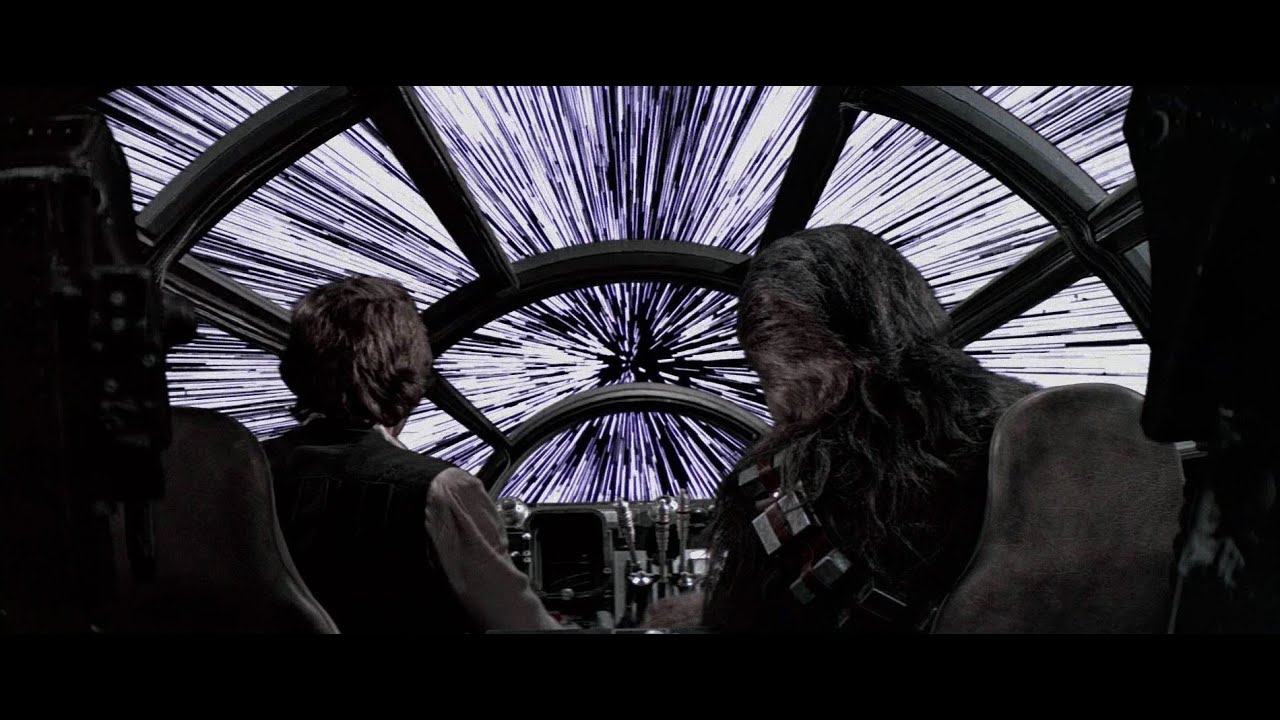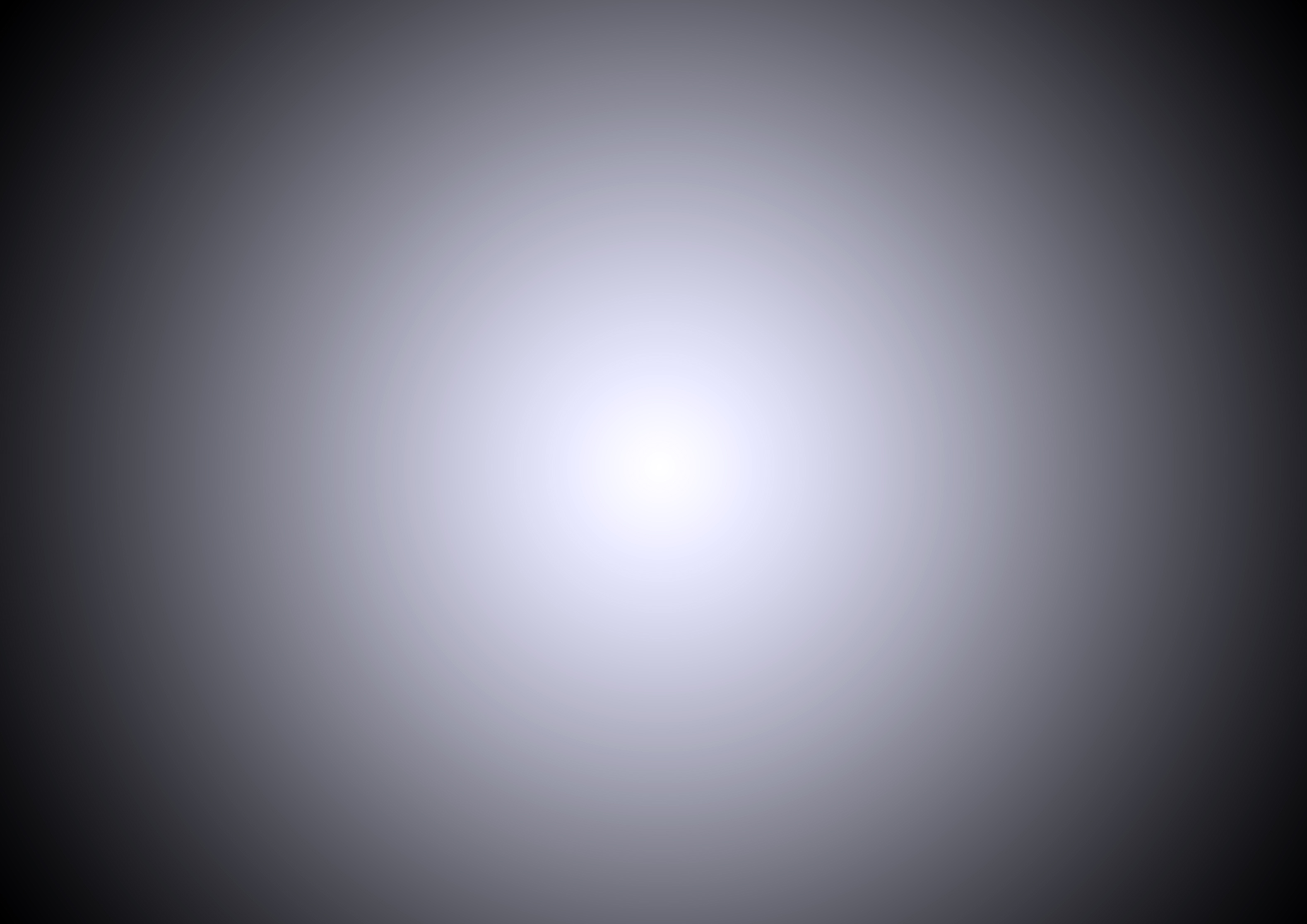'Star Wars'-style hyperdrive might produce a quantum glow, not star streaks
Physicists are on the hunt for the 'Unruh effect,' also known as quantum glow.

The view from the iconic Millennium Falcon of "Star Wars" during hyperdrive maneuvers would be far different than what science fiction portrays, scientists say.
Rather than the iconic star streaks, we'd see a glow, either due to quantum (subatomic) fluctuations, as a new study proposes, or in previous work, perhaps due to the Doppler effect shifting the visible wavelengths of stars into the X-ray range. Of course, absent a hyperdrive-equipped ship, it's been difficult to prove the 'glow' theory despite the fact that the quantum fluctuation idea dates to the 1970s.
But now, a new study proposes a way to finally see the quantum phenomenon in action, perhaps allowing scientists to simulate the so-called "Unruh effect" every few hours if all goes well.
Related: 'Star Wars' tech: 8 sci-fi inventions and their real-life counterparts
"Now at least we know there is a chance in our lifetimes where we might actually see this effect," study co-author Vivishek Sudhir, assistant professor of mechanical engineering at the Massachusetts Institute of Technology, said in a university statement.
Sudhir evoked Princess Leia's famous plea to Obi-Wan Kenobi, "You're our only hope," when talking about the difficult work still facing his team. "It's a hard experiment, and there's no guarantee that we'd be able to do it, but this idea is our nearest hope."
The Unruh effect, more formally known as the Fulling-Davies-Unruh effect, states that a body moving swiftly through the vacuum of space should feel warm radiation as a result of the acceleration. That radiation would come from quantum interactions and fluctuations in space, according to the statement. But to see this effect at the atomic level, an atom would have to accelerate to the speed of light in less than a millionth of a second.
Get the Space.com Newsletter
Breaking space news, the latest updates on rocket launches, skywatching events and more!

Absent some source of "incredible acceleration," Sudhir said, you'd have to wait around a "ginormous" time to see an atom emit such a glow — a time that exceeds the 13.8-billion-year age of the universe. In theory, the effect would (eventually) happen due to quantum fluctuations in the vacuum, which are amplified as the atom passes through the vacuum.
To increase the probability of the Unruh effect happening in a more reasonable timeframe, the study team proposed introducing light photons as a solution. The approach, known as 'stimulation,' would increase quantum fluctuations in the vacuum. The problem is those photons would also increase unwanted effects in the vacuum that would interfere with measurements of the Unruh effect. (The MIT press release did not elaborate on what the unwanted effects would be.)
The new study says we can get around that issue. Scientists, the statement noted, "showed theoretically that if a body such as an atom could be made to accelerate with a very specific trajectory through a field of photons, the atom would interact with the field in such a way that photons of a certain frequency would essentially appear invisible to the atom."
In other words, the specific trajectory of that atom would render all other unwanted effects of the stimulation "transparent," allowing scientists to focus on the thermal radiation produced by the Unruh effect.

Making that happen in real life will be an undertaking. The plan is to build a particle accelerator, roughly the size of a laboratory, to accelerate an electron close to the speed of light. The electron will also be stimulated with a laser beam at microwave wavelengths, in the hope they can engineer the experiment to purely measure the Unruh effect.
Sudhir added the team feels they are close to cracking the problem. "Given the 40-year history of this problem, we've now in theory fixed the biggest bottleneck."
A study based on the research was published April 21 in Physical Review Letters.
Follow Elizabeth Howell on Twitter @howellspace. Follow us on Twitter @Spacedotcom and on Facebook.
Join our Space Forums to keep talking space on the latest missions, night sky and more! And if you have a news tip, correction or comment, let us know at: community@space.com.

Elizabeth Howell (she/her), Ph.D., was a staff writer in the spaceflight channel between 2022 and 2024 specializing in Canadian space news. She was contributing writer for Space.com for 10 years from 2012 to 2024. Elizabeth's reporting includes multiple exclusives with the White House, leading world coverage about a lost-and-found space tomato on the International Space Station, witnessing five human spaceflight launches on two continents, flying parabolic, working inside a spacesuit, and participating in a simulated Mars mission. Her latest book, "Why Am I Taller?" (ECW Press, 2022) is co-written with astronaut Dave Williams.
